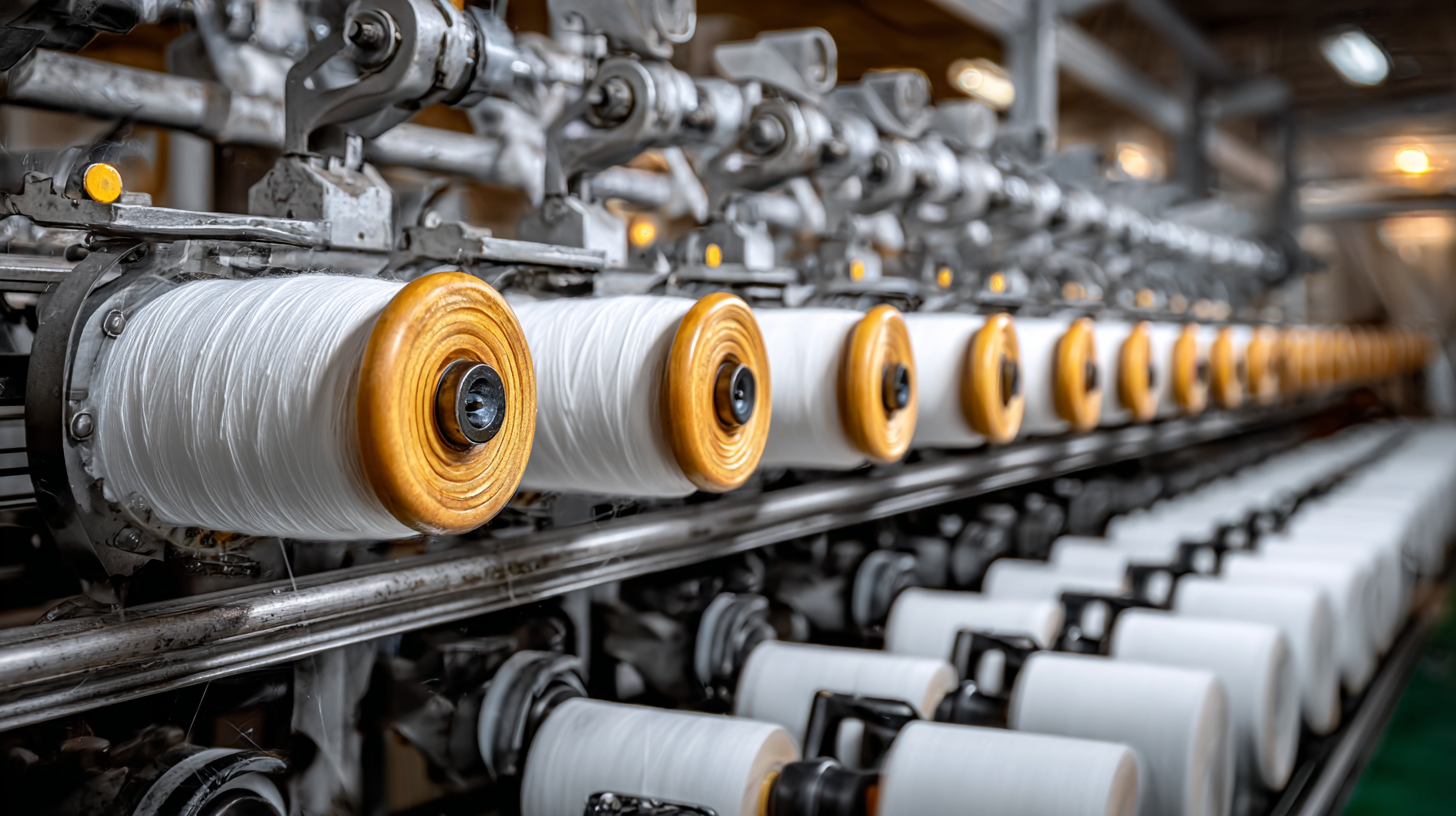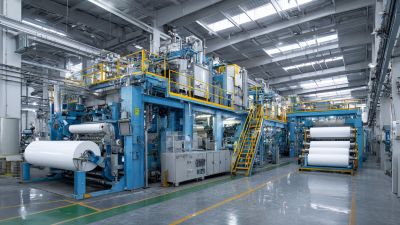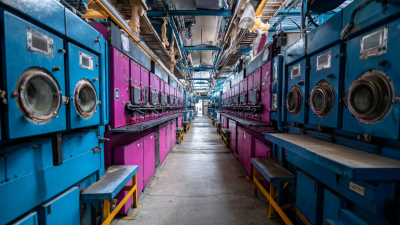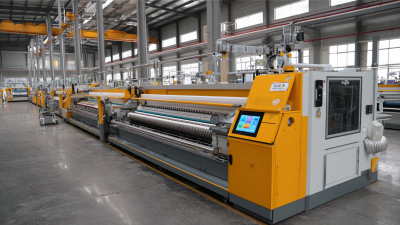Leave Your Message
In the ever-evolving textile industry, the quest for optimal yarn production is paramount, and selecting the right machinery plays a pivotal role in this endeavor. As industry expert Dr. Emily Randolph, a leading authority on spinning technology, once stated, "The efficiency of a Ring Spinning Machine directly influences the quality of the yarn produced, impacting not only production rates but also overall fabric performance." Understanding the latest advancements in ring spinning technology is crucial for manufacturers aiming to enhance their production processes and maintain competitive advantage.

With this in mind, we delve into the 2025 Top 5 Ring Spinning Machines that every yarn producer should consider. These machines represent the cutting edge of ring spinning technology, offering features that significantly improve efficiency, reduce downtime, and ensure consistent yarn quality. As the demand for high-quality yarns continues to rise, making informed choices about the equipment utilized in production becomes increasingly critical. In the following sections, we will explore these top machines, examining their unique capabilities and how they stand to benefit your yarn production operations.
When considering ring spinning machines for optimal yarn production in 2025, there are several key features that should be top of mind. Firstly, the innovation in energy efficiency is crucial. Modern machines are increasingly designed to consume less power while maintaining high output levels, which can lead to significant cost savings over time. Look for machines with advanced drive systems that utilize variable frequency drives (VFDs) to minimize energy use during operation.
Additionally, automated features have become more prominent in the latest models. Enhanced automation not only streamlines the production process but also minimizes human error, leading to improved quality and consistency in yarn production. Machines equipped with real-time monitoring systems could provide valuable data analytics, allowing for prompt adjustments to maintain optimal performance.
**Tips:** When evaluating potential machines, consider those with customizable settings for different fiber types. This versatility can greatly enhance product offerings and adaptability to market demands. Furthermore, explore options for machine connectivity to integrate with existing manufacturing systems and leverage Industry 4.0 technologies for more intelligent production outcomes. Lastly, ensure the machine has robust after-sales support and maintenance options to keep operations running smoothly.

In the realm of yarn production, the advancement of technology has brought significant changes to the efficiency and quality of ring spinning machines. Today, several models stand out as leaders in revolutionizing this sector. These machines not only enhance the speed of production but also ensure a finer and more consistent yarn quality, allowing manufacturers to meet the diverse demands of the textile industry more effectively.
One of the top contenders is equipped with innovative automation features that streamline the spinning process, significantly reducing labor costs and human error. Additionally, these machines incorporate advanced monitoring systems that provide real-time data on performance, helping operators make informed decisions on the fly. As sustainability becomes a priority, some of the most effective ring spinning machines also focus on minimizing energy consumption and waste, making them essential tools for modern textile manufacturers seeking to optimize their production while being environmentally responsible.

In the competitive landscape of yarn production, selecting the right ring spinning machine is crucial for optimizing efficiency and product quality. The performance of various leading technologies can significantly impact operational outcomes, highlighting the importance of understanding the strengths and weaknesses of the top contenders. The latest advancements in ring spinning machines focus on enhancing yarn quality, increasing production speeds, and minimizing waste, making it essential for manufacturers to stay updated on these innovations.
A comparative analysis of the top models reveals a spectrum of features tailored to meet diverse production needs. For instance, some machines excel in energy efficiency, while others prioritize versatility in handling different fiber types. Technologies involving advanced automation and smart monitoring systems are becoming increasingly popular, enabling real-time adjustments to optimize performance. By assessing these parameters, yarn producers can make informed decisions that align with their operational goals, ensuring they remain competitive in an ever-evolving market.
When considering the optimal ring spinning machines for yarn production in 2025, cost-effectiveness and return on investment (ROI) become critical factors. Investing in high-quality machinery not only impacts immediate production efficiency but also significantly affects long-term profitability. To maximize ROI, manufacturers should analyze the initial cost versus the expected lifespan, maintenance costs, and productivity levels of each machine. For instance, advanced machines that offer energy-efficient features may have a higher upfront cost but can lead to significant savings in utility bills over time.
Tips: Always look for machines that provide extensive warranty and support coverage to reduce unexpected repair costs. Additionally, ensure that the machine's performance aligns with your production capacity to avoid unnecessary downtime and ensure a steady flow of output.
Furthermore, consider the technology integration in these machines. Manufacturers offering smart technology that enables real-time monitoring can yield better operational insights, allowing for quick adjustments that improve efficiency and reduce waste. Investing in machines equipped with automation features can also streamline processes and save labor costs, further enhancing your bottom line.
Tips: Evaluate customer reviews and case studies related to machine performance and ROI in similar operational settings to make informed purchasing decisions.
The evolution of ring spinning machines is crucial for enhancing yarn quality in textile production. As we approach 2025, industry experts predict significant advancements driven by automation and smart technology. According to a recent report by Textile World, the integration of IoT (Internet of Things) in spinning machines is expected to increase production efficiency by 30%, while also reducing waste by up to 20%. These innovations not only optimize the spinning process but also ensure consistent yarn quality, addressing concerns for manufacturers focused on sustainability and efficiency.
Moreover, advancements in materials science are enhancing the design of ring spinning machines. Recent studies from the International Textile and Apparel Association indicate that the introduction of lightweight, durable components can improve machine longevity and reduce maintenance costs by approximately 15%. As manufacturers invest in these advanced technologies, they are better positioned to meet growing consumer demand for high-quality, eco-friendly yarns. The combination of smart technologies and innovative materials will undoubtedly shape the future of yarn production, setting new standards in the textile industry.
This chart displays the production efficiency (in meters per minute) of the top 5 ring spinning machines projected for 2025 based on advancements in technology that enhance yarn quality.






